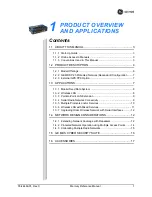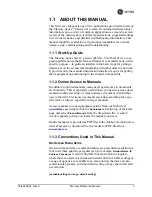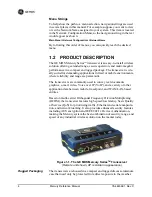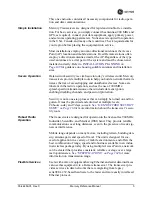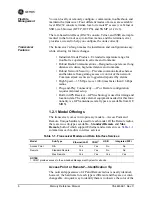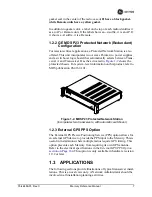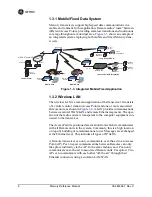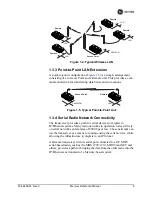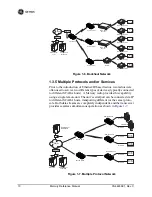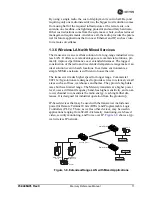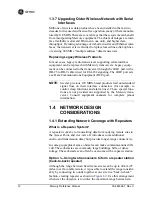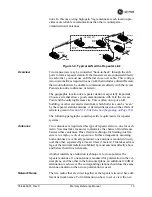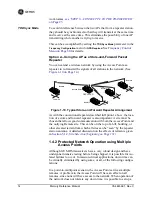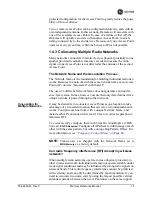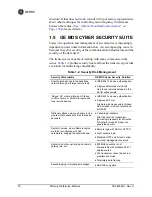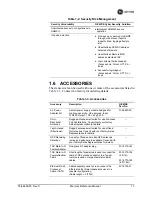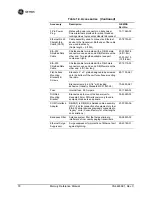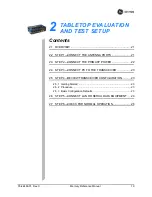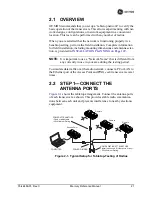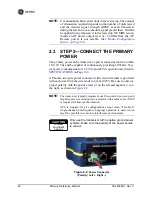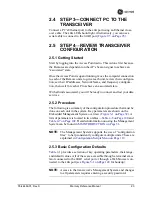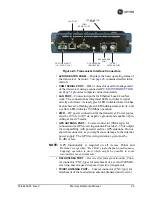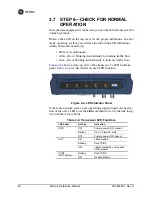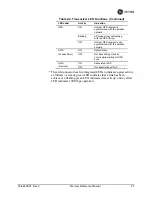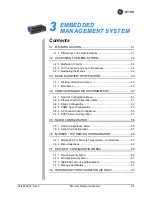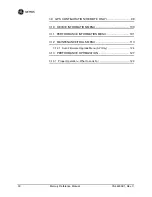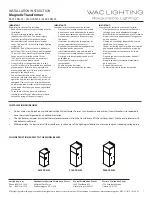
05-4446A01, Rev. C
Mercury Reference Manual
15
protected configuration for the Access Point to greatly reduce the possi-
bility of this occurrence.
Two or more Access Points can be configured identically, each with its
own independent antenna. In this scenario, Remotes will associate with
one of the available Access Points. In case of a failure of that AP, the
Remotes will quickly associate with another Access Point, re-estab-
lishing connectivity to the end devices. Because only one Access Point
operates at any given time, collisions between APs is not possible.
1.4.3 Collocating Multiple Radio Networks
Many networks can operate in relatively close physical proximity to one
another provided reasonable measures are taken to assure the radio
signal of one Access Point is not directed at the antenna of the second
Access Point
.
The Network Name and the Association Process
The Network Name is the foundation for building individual radio net-
works. Remotes in a network with the same network name as an Access
Point (AP) unit are “associated” with that AP.
The use of a different Network Name does not guarantee an interfer-
ence-free system. It does, however, assure that only data destined for a
unique network is passed through to that network.
Co-Location for
Multiple Networks
It may be desirable to co-locate Access Points at one location to take
advantage of an excellent location that can serve two independent net-
works. Configure each network with a unique Network Name, and
install each AP’s antenna with at least 10 feet of vertical separation to
minimize RFI.
To co-locate APs, configure them with Time Division Duplex (TDD)
Sync set to
GPS Required
. Configure all APs that are within range of each
other with the same pattern, but with a unique Hop Pattern Offset. For
more information,
see
“Frequency Control Menu”
on Page 60
.
NOTE:
Transceivers are shipped with the Network Name set to
MDS-Mercury
as a factory default.
Can radio frequency interference (RFI) disrupt my wireless
network?
When multiple radio networks operate in close physical proximity to
other wireless networks, individual units may not operate reliably under
weak signal conditions and may be influenced by strong radio signals on
adjacent bands. This radio frequency interference cannot be predicted
with certainty, and can only be determined by experimentation. If you
need to co-locate two units, start by using the largest possible vertical
antenna separation between the two
AP antennas on the same support
Содержание MDS Mercury Series
Страница 2: ......
Страница 10: ...2 Mercury Reference Manual 05 4446A01 Rev C ...
Страница 28: ...20 Mercury Reference Manual 05 4446A01 Rev C ...
Страница 36: ...28 Mercury Reference Manual 05 4446A01 Rev C ...
Страница 140: ...132 Mercury Reference Manual 05 4446A01 Rev C ...
Страница 142: ...134 Mercury Reference Manual 05 4446A01 Rev C ...
Страница 156: ...148 Mercury Reference Manual 05 4446A01 Rev C ...
Страница 168: ...160 Mercury Reference Manual 05 4446A01 Rev C ...
Страница 184: ...176 Mercury Reference Manual 05 4446A01 Rev C ...
Страница 194: ...I 10 Mercury Reference Manual 05 4446A01 Rev C ...
Страница 196: ...GE MDS LLC Rochester NY 14620 General Business 1 585 242 9600 FAX 1 585 242 9620 Web www GEmds com 175 Science Parkway ...

